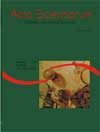Studies on the stability of the human figure drawing
Abstract
Within a sample of 2,428 children from San Luis, Mendoza and San Juan, Argentina (1983), the standards of evaluation for 5 and 6-year-old children proposed by Koppitz (1968) and those developed in Ottawa by Groves and Fried (1991) are compared to Taborda-Barbenza’s ones (1993) with the aim at establishing HFD stability in different populations. This comparative study was also carried out in 127 4-year-old children from San Luis and Villa Mercedes, Argentina, taking into account the frequency of scores recorded in Ottawa and those registered in San Luis and Villa Mercedes. The different items were classified in terms of percentages: 100-86 %, expected; 85-51 %, common; 50-16 %, uncommon and 15-0 %, exceptional. Results show that modifications proposed in this work for the evaluation of HFD make the scale even more valid, even although the HFD is a competent instrument for having a stable measure.Downloads
Download data is not yet available.
Published
2008-07-04
How to Cite
Taborda, A., & Barbenza, C. M. de. (2008). Studies on the stability of the human figure drawing. Acta Scientiarum. Human and Social Sciences, 20, 85-90. https://doi.org/10.4025/actascihumansoc.v20i0.4224
Issue
Section
Education
DECLARATION OF ORIGINALITY AND COPYRIGHTS
I Declare that current article is original and has not been submitted for publication, in part or in whole, to any other national or international journal.
The copyrights belong exclusively to the authors. Published content is licensed under Creative Commons Attribution 4.0 (CC BY 4.0) guidelines, which allows sharing (copy and distribution of the material in any medium or format) and adaptation (remix, transform, and build upon the material) for any purpose, even commercially, under the terms of attribution.
Read this link for further information on how to use CC BY 4.0 properly.























